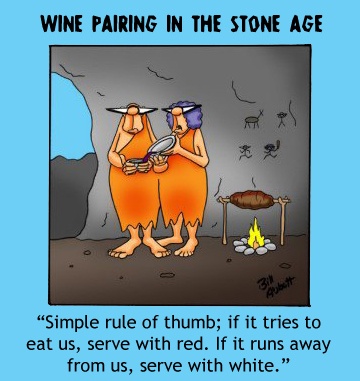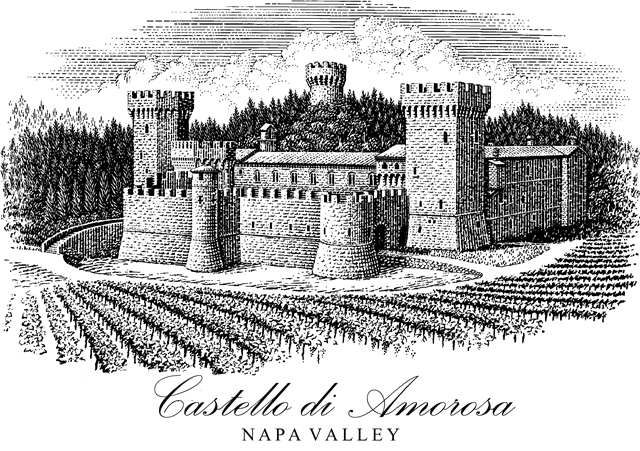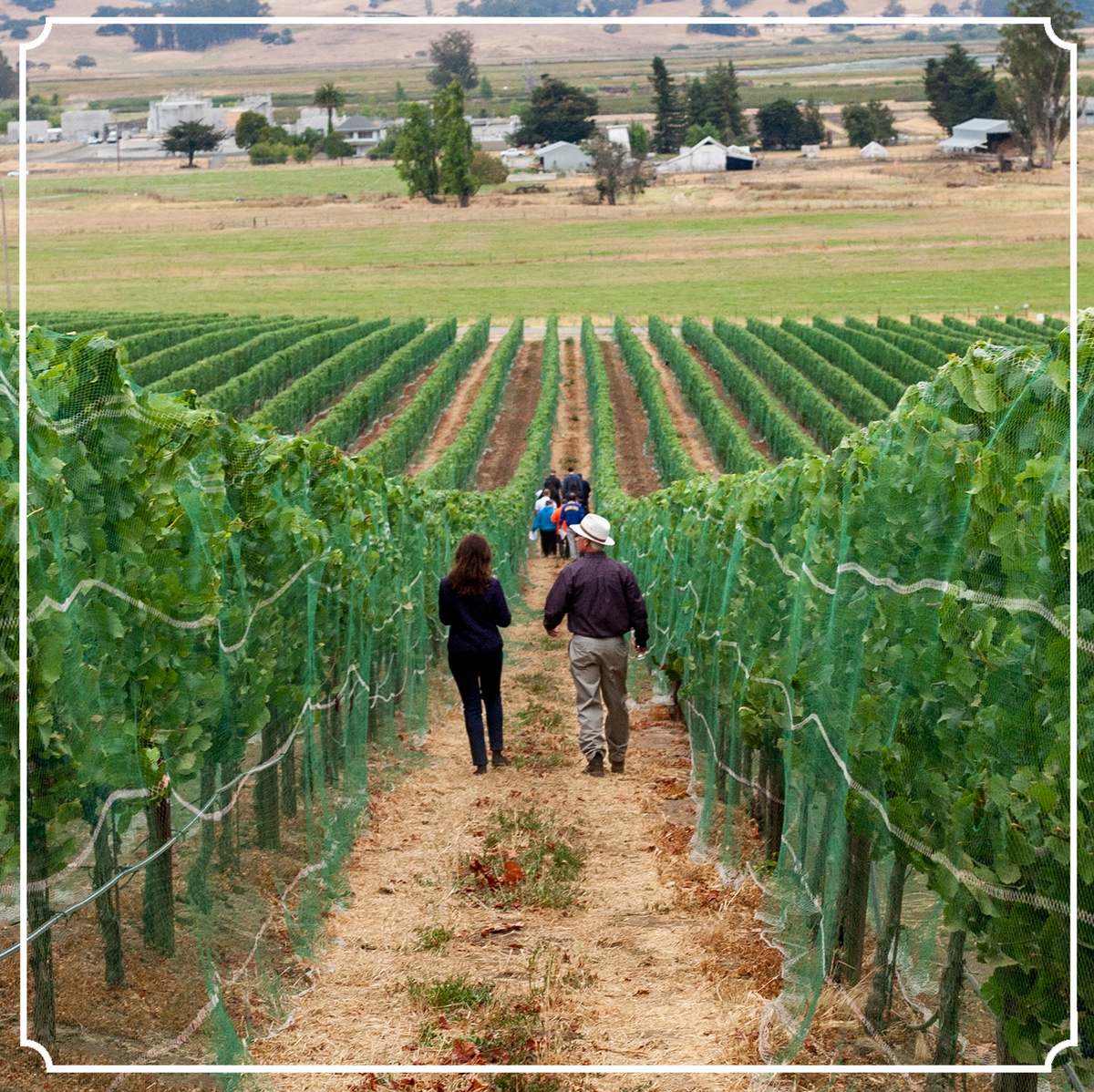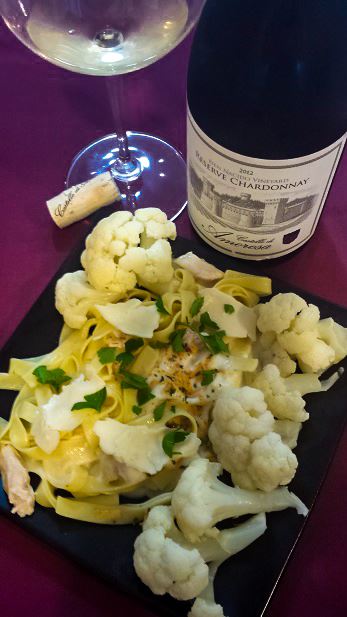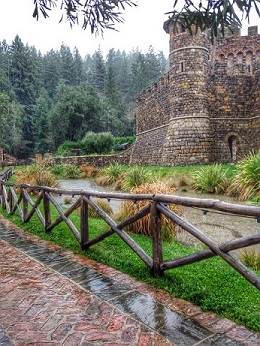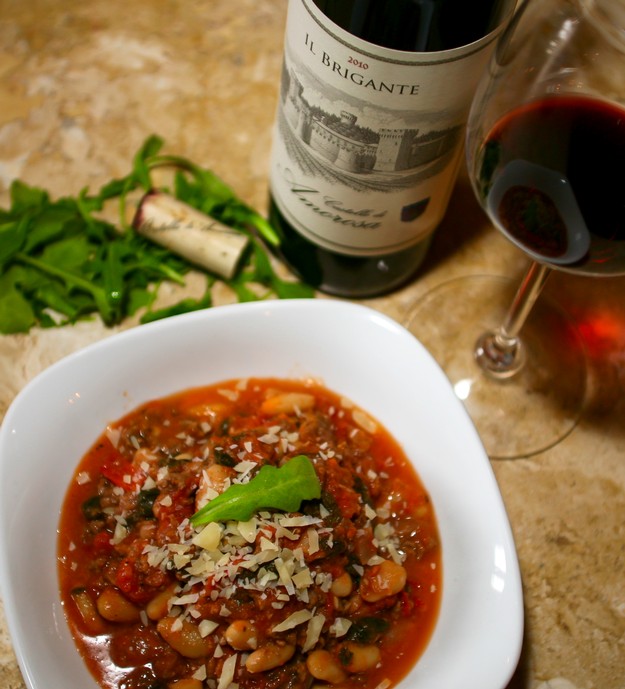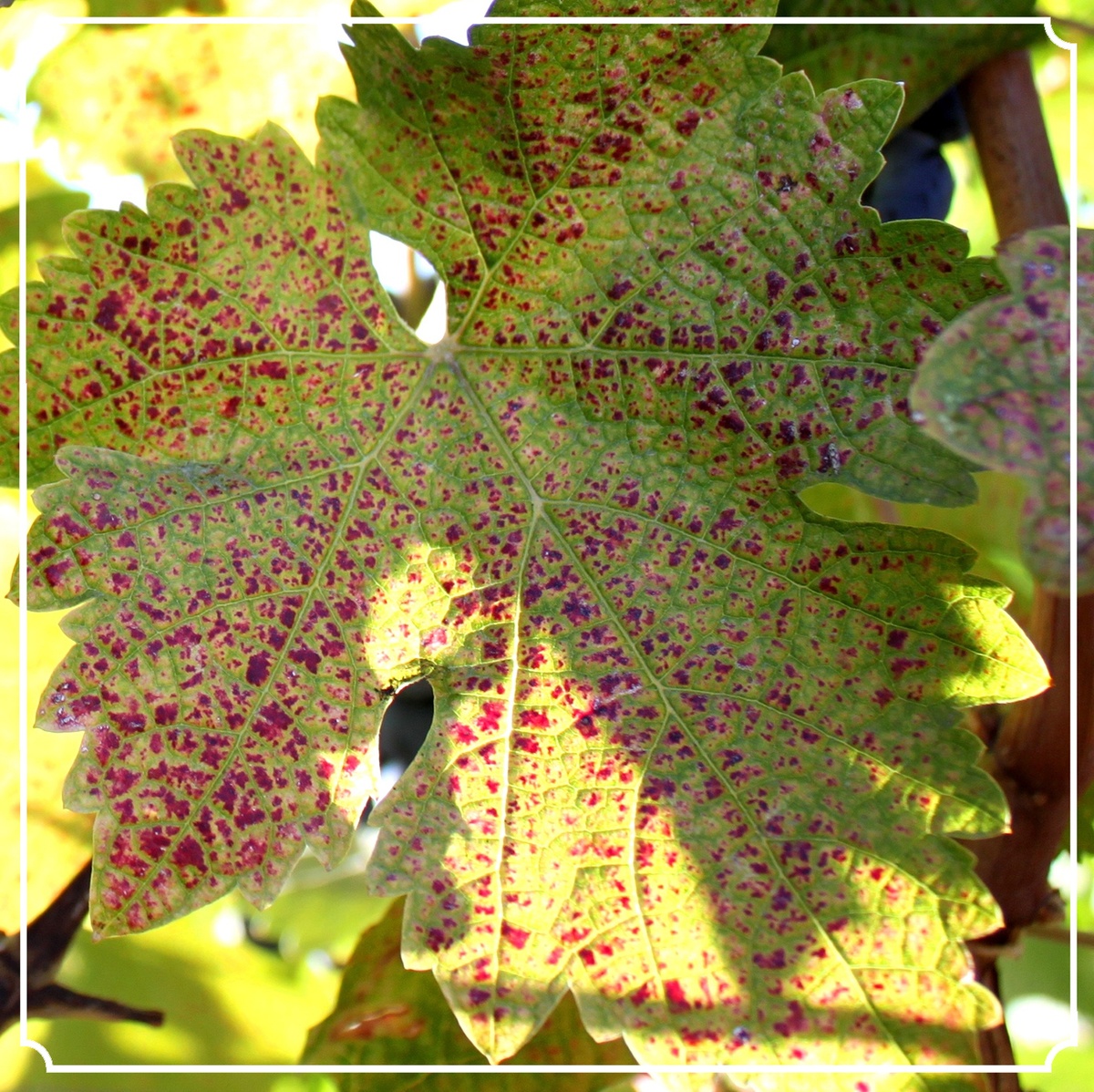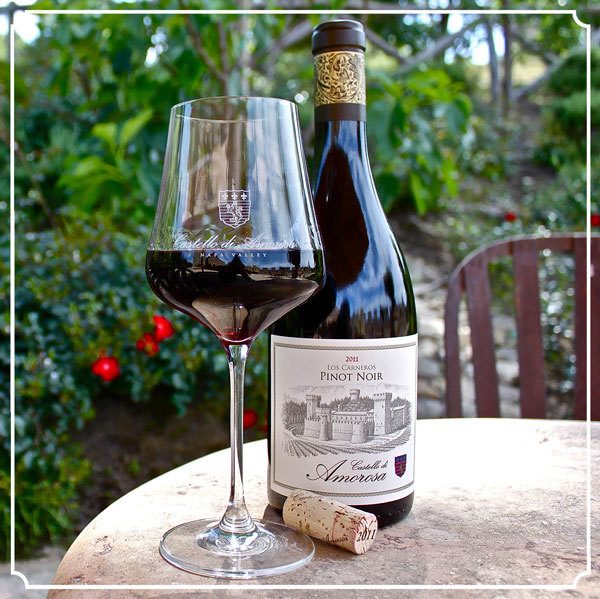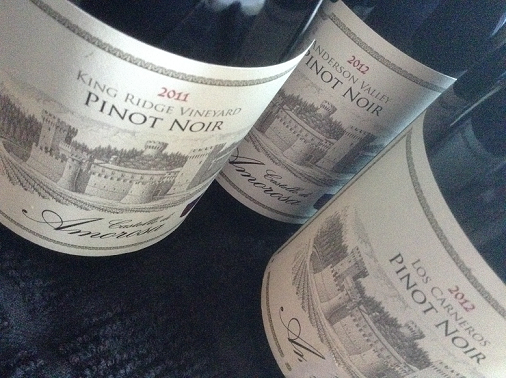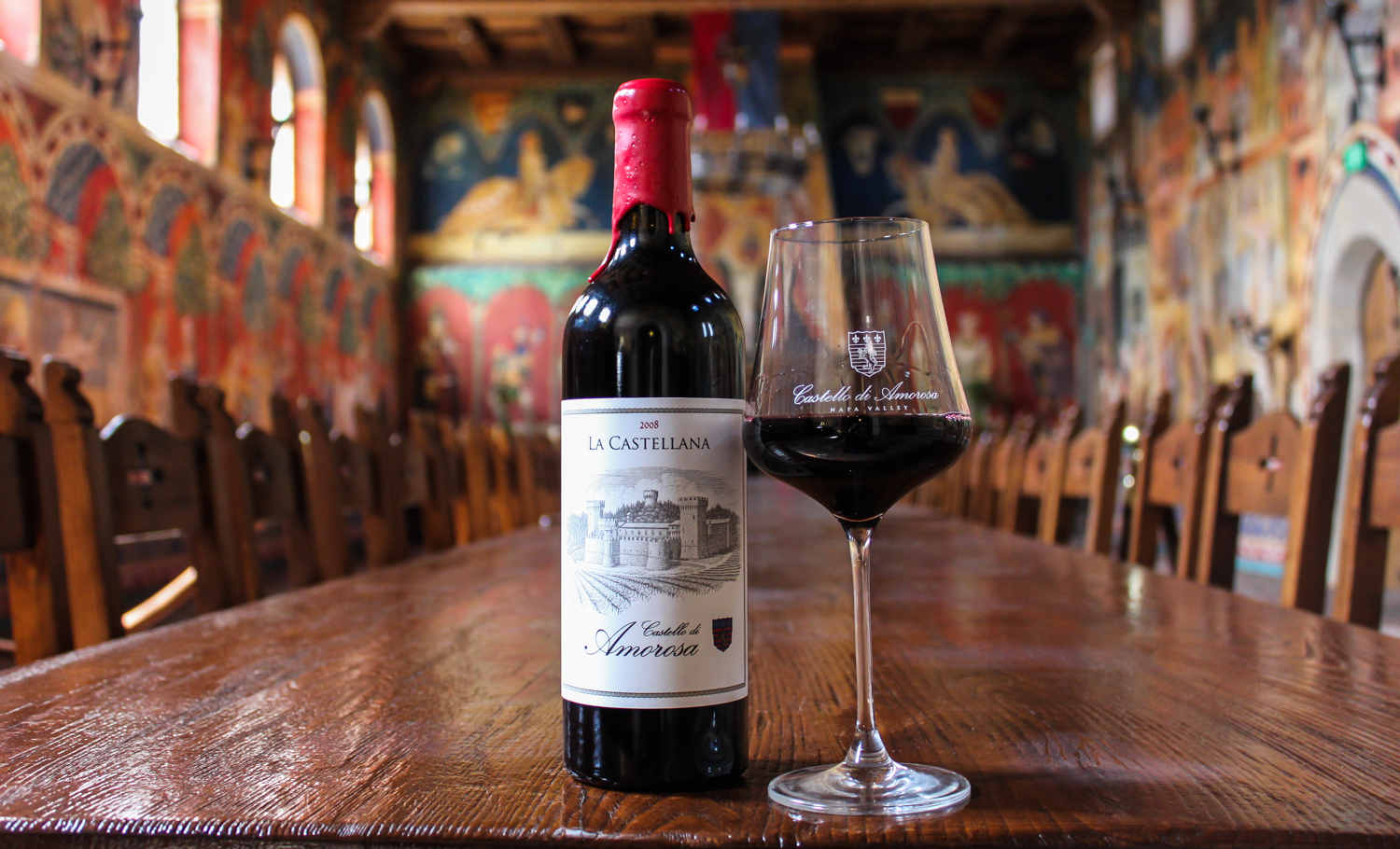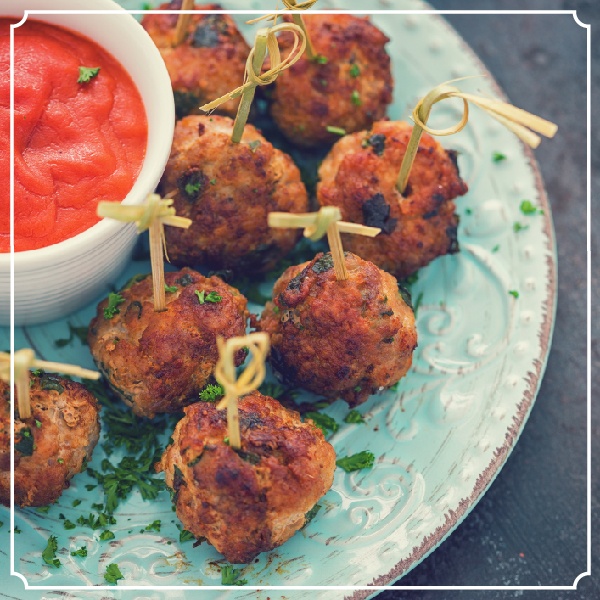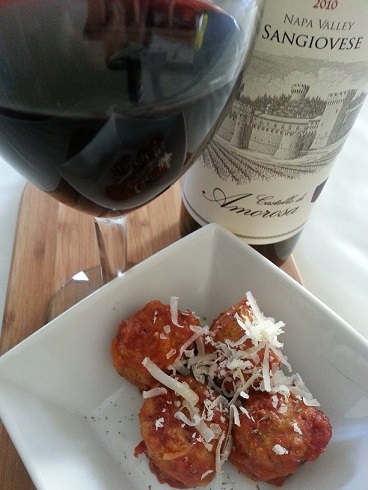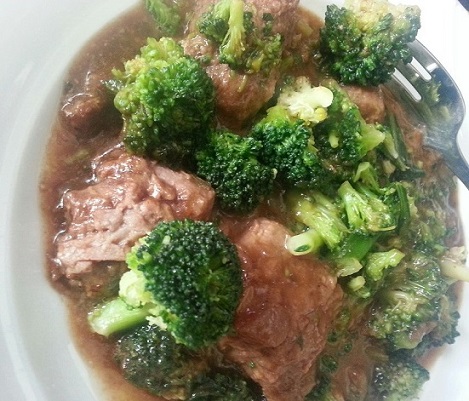Maui (re) Visited

Mary Davidek
Maui (re) Visited
Returning from a vacation typically means back to the grind, even when the ‘grind’ is a beautiful castle winery in a picture perfect vineyard, vacations are rejuvenating and refreshing. As I was looking at pictures from our trip I realized the majority of the images were not of lush ocean tropical landscapes but of the delicious foods and amazing wines we enjoyed. Fresh seafood flown in from Alaska from our good friends and travel partners Tim and Carol Berg (www.great-alaska-seafood.com) dominted the menu during our time in Maui. I admit, Alaskan seafood in Hawaii may not be the norm but our 49th and 50th states definitely made for delicious pairings! Next year…maybe Lomi-Lomi Salmon on Alaska’s Kenai Peninsula!
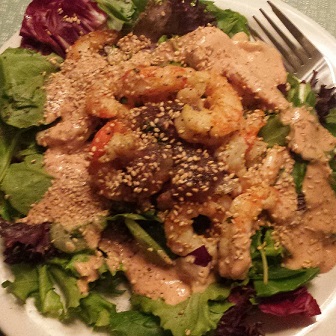
The best seafood salad dressing and certainly one of the easiest-
Combine 4 parts Mayo to 1 part spicy cocktail sauce and 1 tsp sesame seed oil
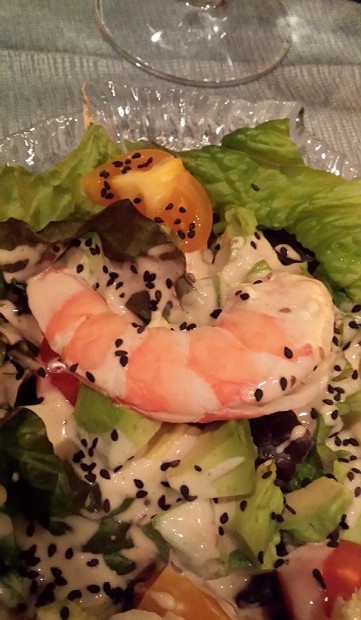
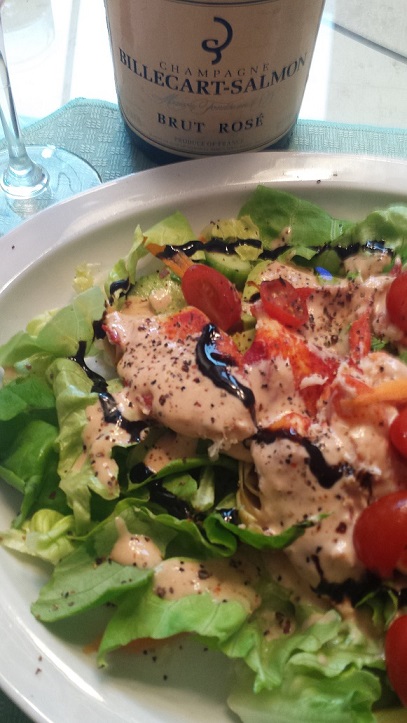
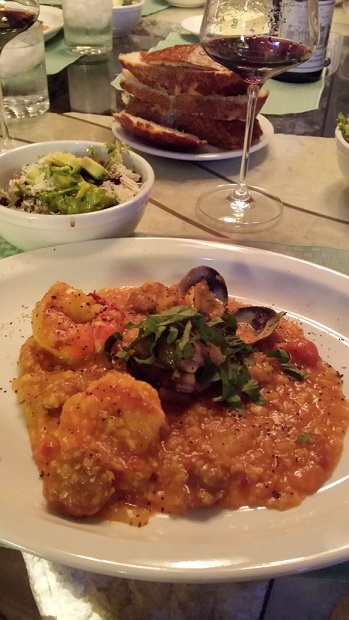
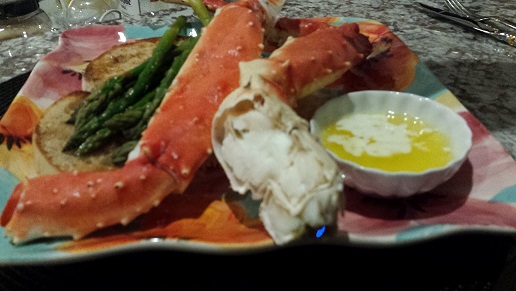
Hawaiian Portuguese inspired Paella made with fresh clams and linguiça paired with Sangiovese and yes, the biggest king crab legs this side of Hana!
Terra de Promissio - Checkmate Castello

Mary Davidek
Terra de Promissio Pinot Noir – Checkmate Castello
I love a game of chess, deep thought and out-maneuvering, strategy and calculating, all while carefully not giving up your advantage. Chess is also an apt metaphor for many life situations; social posturing, politics of work, positioning friends, and dare I say…family? Business is a place we commonly employ schemes and strategies, even the business of wine can pose circumstances which entail positioning and thoughtful approach. Admittedly this may seem counter-intuitive; to many, wine is perceived to be artistic and cerebral. Wine evokes romance and esoteric conversation, not strategy or offensive and defensive tactical maneuvers. However, as in all business, great success requires planning and navigating. After all, for a winery, in the vast world of palate-pleasing if one only makes wine one likes or prefers, you may appeal to, well, one.
Which brings me to my point…and yes, I have one.
At a recent staff meeting the topic du jour was the release of the Castello’s much anticipated Pinot Noir from the Terra de Promissio vineyard in Sonoma County. Certain die-hard cab-loving staff members were having a bit of a challenge wrapping their mind and palate around this particular bottling. Full disclosure, this is not a Cabernet lover’s Pinot. No, the Terra de Promissio vineyard is planted with prized Burgundy clones, the fruit displays structure with finesse and elegance rather than some Cali Pinot Noir’s cab-like vim and vigor.
This pedigreed vineyard is located on a 50-acre ranch in Sonoma, overlooking the town of Petaluma in an area of much viticultural success known as the Petaluma Gap. Caution; an internet search result may yield directions to an outlet mall so include the term ‘Pinot Noir’ if searching for info about the Petaluma Gap. (unless you are looking for jeans or a sweater!)
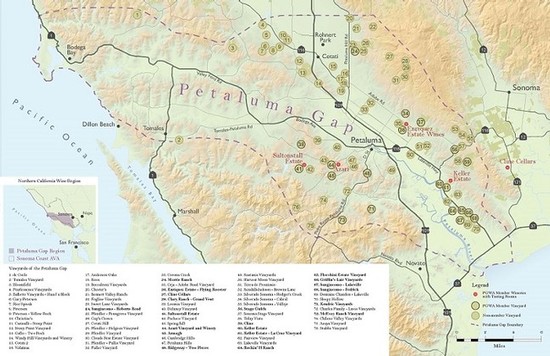
The “Gap” is actually a wind gap named for the coastal mountain opening that stretches east from the Pacific through the town of Petaluma and south to San Pablo Bay. This marine cooled gap creates perfect growing territory for cool temperature loving thin-skinned Pinot Noir grapes.
With the acquisition of Terra de Promissio fruit, Castello has advanced on yet another strategic post of wine making and palate-pleasing, classic old world meets new world Pinot Noir. This base is covered…the palates are pleased. Good move.
Now, back to the point I assured you I would make. While it is true, Cabernet Sauvignon is the powerful king of the sun-drenched Northern end of Napa Valley, Pinot Noir is most certainly the reigning queen from Sonoma.
And, just like the game of chess……it is the queen who takes the game.
Checkmate.
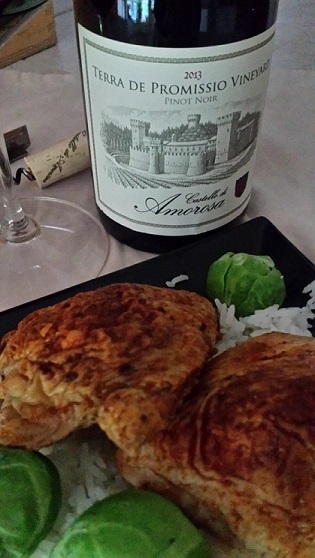
Chinese Five Spice Chicken Thighs
Five Spice is a preblended mixture of Star Anise, Cloves, Cinnamon, pepper and ground Fennel Seed and is a tasty rub for pork, salmon and poultry. Five Spice doesn’t overwhlem Pinot’s subtlely, instead, the bright red fruit notes of the Terra de Promissio Pinot Noir create a perfect complement for this exotic spice rub. This quick and delicious preparation is also ideal for chicken legs or appetizer wings.
Directions:
- Rinse and dry chicken pieces.
- Preheat oven to 375 degrees.
- Coat the chicken with a dry rub of Chinese Five Spice.
- Place the chicken thighs in a pan and into oven and bake for about 25 to 35 minutes – until completely cooked through (an inserted thermometer should read 170 degrees).
- Serve with rice and enjoy!
Winter White

Mary Davidek
Winter White Wine | Wine for the Season | Castello di Amorosa
While most of us have a go-to favorite wine taking permanent tenancy in the ‘most preferred’ zone, often we explore other varietals– particularly when entertaining or in my case, looking for the just-right pairing. Entertaining and pleasing guests with diverse palates, seasonal influences, even extreme weather can bring wine-drinking-enjoying challenges. When it is 100 degrees and the mercury is soaring it can be a test to feign enthusiasm about a glass of inky rich Cabernet for the thick Porterhouse grilling on the ‘cue. Likewise, when you spy frost on the pavement and the windshield is icy, a chilled crisp white wine may be less than heart-warming. What to do when some of the satisfying hearty wintertime favorites are rich and creamy and just screaming for…. well….not a red wine.
My winter white is Chardonnay. Specifically, Castello di Amorosa Bien Nacido Vineyard Chardonnay. This is not the ‘Castello sommelier’ pontificating on the many virtues of this award winning chardonnay, this is me, the ‘wine drinker’ who is generally not excited about most California chard.
Castello’s Bien Nacido Vineyard Chardonnay is different—this fruit is exceptional. The vineyard is located on the central coast of California and exposed to the Pacific. The coastal morning fog provides cool temperatures early in the day but warm late afternoons drenched in the Pacific sun. This gives the slow ripening grapes longer hang time on the vines while enjoying the real estate and the luxurious coastal influence. The juice shows its mettle when barrel fermented but not over manipulated so the gorgeous bright backbone of zippy acidity shines through. This balanced chard displays a soft nuttiness with fruit and focus. Juicy Comice pear, white peach and light vanilla flavors; full bodied and rounded–perfect for the rich creamy cold-weather foods we crave.
While winter white wine may not conjure up warm cozy images outside–
when you are inside, winter white can be an absolute delight!
Quick and Easy Chicken Fettuccine Alfredo
♦ ½ lb. fettuccine, uncooked
♦ 1lb. boneless skinless chicken breasts, cut into strips
♦ 4tsp. flour
♦ 1-1/4cups chicken broth
♦ 4oz. Mascarpone ( sub cream cheese)
♦ 1/2 cup Grated Parm, divided
♦ ¼ tsp. garlic powder
♦ 1/4tsp. white pepper
Cook pasta to slightly firm. Sautée chicken in large nonstick skillet on medium-high heat 5 to 7 min. or until done, stirring occasionally. Remove from skillet. Mix flour and broth in same skillet with whisk. Stir in Mascarpone, 2 Tbsp. Parm, garlic powder and pepper; cook 2 min. or until mixture boils and thickens, stirring constantly. Stir in chicken. Drain pasta; place in large bowl. Add chicken mixture; toss to coat. Sprinkle with remaining Parm.
Warm On The Inside

Mary Davidek
Warm on the Inside
And then….it rained. Napa Valley along with most of Northern California is finally getting relief from the drought of the past several years. While the grapes did their job, at times flourishing in the dryer than normal conditions, wine makers and vineyard managers were tenuously hopeful the next season would restore more normal weather patterns to replenish dwindling water reserves. So far, the Fall/Winter season of 2014 has been quite rainy with more precipitaion in the forecast; it seems the vineyard rain-dance performances have done the trick. The local mountains now have a foundation of snow and all are optimistic for a white winter in the Sierras to refresh our local rivers, streams and reservoirs.
As much as I would like to curl up by the fire and enjoy a good book with a glass of vino– the Christmas Cards are beckoning (maybe New Year’s greetings?), the gifts are nagging to be wrapped (thank goodness I stocked up on sparkly gift bags!) and the box of twinkle lights liberated from storage is (soon to be) sparkling. Since this is the time of year amok with shopping and work and weather, making dinner can be challenging and often, low on my list of necessary accomplishments. Thank goodness, for me it is not a worry tonight. In the winter, each week I make a large pot of soup to supply plenty of left-overs and satisfying quick meals. This Tuscan White Bean chili is one of my favorites. When it is cold outside—a hearty bowl of a soup and a glass of red makes it easy and delicious to stay warm on the inside.
Warm Holiday Wishes, from our castle to yours.
The Castello is especially beautiful in the rain…
It can also chill me to the bone
But, this will warm me from the inside out!
Tuscan White Bean Chili with Spinach
Fall Back

Mary Davidek
Fall back
Shorter days have arrived; the vineyard’s yellow tinged foliage marks the beginning of the end of another season. The grape vines now fall into a slumber until next spring when young buds will emerge and another harvest is in the making. Time marches on.
This Sunday clocks move forward one hour. Most people remember the changes with the catch phrase “spring forward, fall back,” referring to the season when the changes take place. The U.S. government initially started Daylight Saving Time during World War I to save energy for wartime production. The federal government enacted Daylight Saving Time as a permanent change in 1966. In 2007, the time period was extended by four weeks as a means to save energy through longer daylight hours.
This means our days start and end earlier. Sunlight becomes a treat to be savored and quick night fall commands a need to bulk up– sweaters and jackets make their yearly trek to and from the dry-cleaners, extra blankets are on the bed and shopping lists reflect a need for substance.
I was feeling a bit chilled last night as it dipped down to the low 60’s and I found no warming compassion from my Minnesota raised husband! As he was fixed on game 7 I put the finishing touches on a meal sure to warm us both. After a summer of imposed solitude and dormancy the oven was back in action, now generating welcome warmth and oozing with savory aromas permeating the house.
Game 7 ended with the Giants bringing it back by nabbing a 3rd World Series championship in 5 years! We ended the evening with a great meal and a toast to the Giants, great champions and a beautiful fall. Without light there is no dark. Without cold, where lies the value of warmth? Without ‘fall back’ we would not ‘spring forward’.
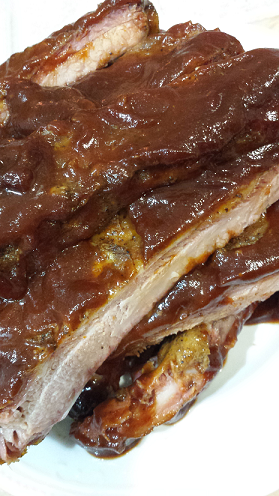
World Series 2014 took the bay area to Kansas City which made me crave BBQ. The sauces found in KC are tomato-based, with sweet, spicy and tangy flavor profiles. My store bought sauce was a tad too sweet so I stirred in a bit of mustard and a dash of red pepper flake.
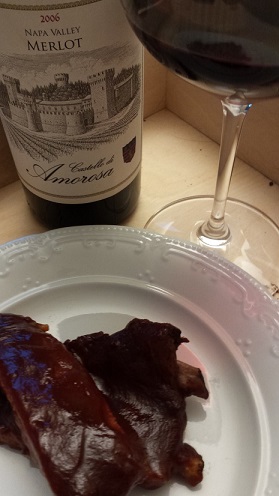
Fall back was perfect with yummy baby backs cooked low and slow paired with a real throw- back, one of my favorite wines produced at the Castello, 2006 Napa Valley Merlot. This Merlot was voted best of the vintage in Napa Valley and ageing perfectly. Secondary notes of dried herbs in the background but plush fruit and soft smoky plum up front, this is Merlot at its finest.
Summertime Wine and Pasta Pairings | Castello di Amorosa

Mary Davidek
Summertime Wine and Pasta Pairings | Castello di Amorosa
Summer is a time to relax and watch a baseball game, munch on a hotdog, linger over a backyard barbecue and indulge in a few guilt-free s’mores by the campfire. Heavy comfort foods traditionally don’t hold much appeal when the mercury climbs, but, with a few variations and use of fresh seasonal ingredients pasta is one pantry staple that is never out of season. True– pasta is a favorite comfort food in cold weather months. However, with quick and easy variations we can create light delicious meals which are easily transported for dining al fresco and provides yummy left-overs. As the temperature rises, simply exchange heavy additions for fresh seasonal veggies and farm fresh produce; corn, peas, tomatoes, and backyard herbs. And don’t put the red wine glasses away waiting for autumn’s first frost. Light-bodied reds like Pinot Noir and Sangiovese are just right with summertime favorites like King Salmon or pasta salads.
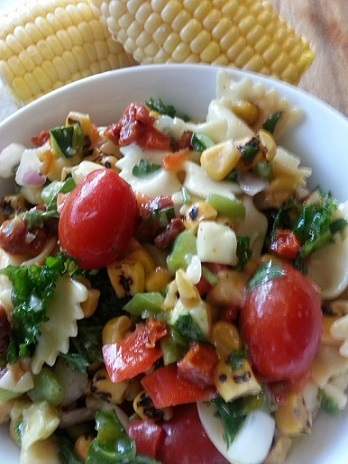
Make a pasta salad with garden fresh produce and serve with an ear of sweet summer corn. Experiment with salad-friendly shapes like rotelli or farfalle which helps grab the dressing and the veggies.
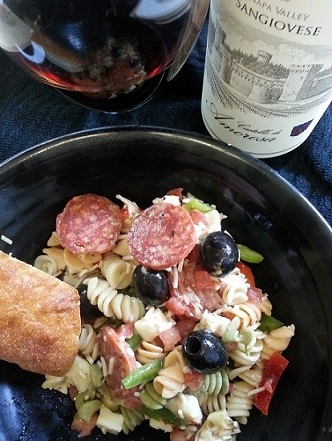
Build a heartier dish by adding Italian Salami, salty cheese or briny olives. Toss together in a light vinaigrette and serve with a tasty herb ciabatta. Castello di Amorosa’s Italian-inspired Napa Valley Sangiovese comes alive with this light but satisfying salad entrée. Serving temps are vitally important with these lower pigmented grapes. Target 62-65 degrees, this allows the bright fruit notes to shine through without becoming dulled by warmth.
Pinot Noir— The Art of Getting There

Mary Davidek
Pinot Noir— The Art of Getting There
“There is no ‘there’ there”. Gertrude Stein’s often quoted prose is commonly used to describe something that lacks soul, culture, life, or identity. While Ms. Stein was referring to the faceless existence of city-life, some critics have proclaimed this lament when speaking of grapes grown in and the wine making efforts of America.
The French speak of ‘terroir’ when referring to winemaking and the wines of France which is to say grapes are a reflection of the region in which they are grown; the soil, the climate, the aspect of a hillside, the amount of rain, the surrounding vegetation, etc. The United States’ AVA system has been criticized as nothing more than a weak effort to create a false sense of place in the wines produced — an illusion– as they state, there is nothing ‘there’.
*le sigh*
I decided to look beyond Cabernet Sauvignon, the reigning king of grapes for my initial attempt at disproving this theory and thus directed my attention to a varietal that, in my humble opinion, is ‘place’ personified. Pinot Noir, the thin skinned red wine grape of the Burgundy region of France has become increasingly popular with wine-buying wine-drinking Americans. It is a classic, elegant, food friendly wine—its enigmatic character and appeal as elusive as it is obvious.
Pinot Noir grapes are grown around the world but they flourish in cooler growing regions. In Oregon, the Willamette Valley is nearly the same latitude as the famed Burgundy region of France and has become synonymous with world class Pinot Noir. Oregon producers have found their sense of place as the Pinot fruit embodies the sophistication and finesse of a great Burgundy yet displays layered earth and bright red fruit summoning unrestrained California productions.
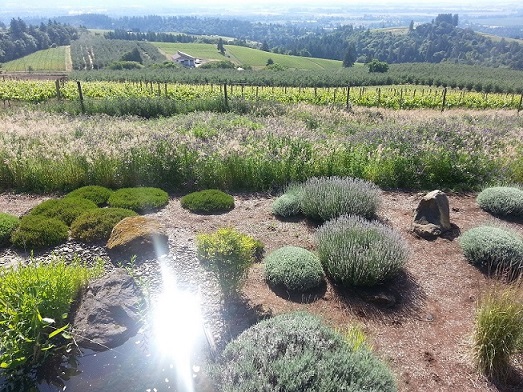
The rolling green hills of temperate Willamette Valley provide the perfect place for cool-climate loving Pinot Noir
California Pinot Noir is more mercurial stylistically without any one style from this large and geographically diverse growing area. From Santa Barbara and the Central Coast to the south and Sonoma County and Anderson Valley in the northern half of the state, diverse topography and weather patterns separate this region of more than 450 miles. From Santa Barbara and the Central Coast we find opulent wines with definitive Pinot Noir fruit that reflects its warmer and more southern roots with a controlled strength. Cooled by the San Pablo Bay, the Carneros region straddles both Napa and Sonoma Valley and shows hints of spice and brightness unique to these cooler vineyard sites of this sun-drenched area. North of Carneros we find the Sonoma Coast where Pinot shows depth and earthy complexity with some of California’s most acclaimed Pinot Noir producers firmly planted in this lush pacific expanse. Further north of Sonoma we find California’s newest Burgundy-like super star in the highly praised and sought after Anderson Valley of Mendocino County. Here the ocean cooled valley floor rarely sees summer temps above 85 degrees….even in the height of the season. Pacific marine influence floods the valley floor with morning coastal fog providing slow even ripening. Enthusiasts agree this temperate region yields fruit of subtle distinction.
A Pinot Noir trio from Castello di Amorosa; Los Carneros, Anderson Valley and the highly acclaimed King Ridge of Sonoma Coast. Each with expressive fruit and character from unique vineyard locations.
As far as American winemaking efforts, maybe we have not come up with anything quite as mysterious as ‘terroir’ to encapsulate the distinctive place of our wines….maybe we never will. But, as the saying goes, sometimes the best part of the journey is getting there.
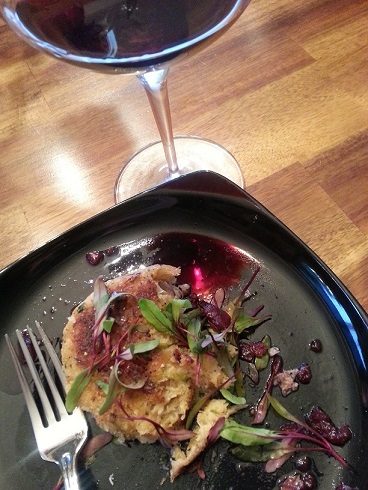
Dungeness Crabcakes with Rainier Cherry Pinot Noir Reduction
For the reduction-
- 10-15 ripe cherries, pitted and chopped
- 10 ounces Pinot Noir
- 1 Tbsp Honey
- 1 Tbsp Seasoned Rice Vinegar
- Pink peppercorn to taste
Add all ingredients to sauce pan. Slowly reduce over medium heat.
Mary Davidek C. S., S.W.
The Perfect Blend

Mary Davidek
The Perfect Wine Blend: Blending Grapes & Varietals
We are getting ready for a wedding in our family, my step-daughter is getting married in September. Last week my husband and I had a pre-nuptial trip to Boise, Idaho for talks of wedding plans. This was all to be considered and discussed at a dinner which included my husband’s first wife along with the future parents-in- law, yikes! Decisions had to be made on apparel, cakes, invitations, shoes, music, relatives and ever-growing extended families. The evening was an interesting and diverse mix of people with varied relationships and ages spanning from 25 to 65. There were enough backgrounds and life events to fill a night’s conversations with entertaining and thought-provoking stories. No topic was out of bounds or taboo as we covered everything from the best way to ripen avocados to current affairs to wedding invitations. It was a great evening of fun, laughter and growth. As we were tidying up my step-daughter said to me, “wow, tonight was certainly an interesting blend”.
Which, of course, made me think about wine. Totally understandable as the evening had consisted of at least 4 different bottles of vino and they were– blends. While some varietals like Pinot Noir or Chardonnay are best as a single varietal because blending can overwhelm the unique characteristics of thin-skinned grapes, many varietals suffer from this imposed solitary confinement. Wine blends often deliver increased complexity and are more interesting than single varietal wines. In fact, some of the world’s greatest wines are made from a blend of grapes rather than a single varietal.
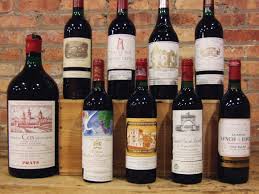
Some of the most prestigious wines in the world are blends. Bordeaux wines from the left bank of the Gironde River in France are typically blends of Cabernet Sauvignon with Merlot and Cabernet Franc. When blending Bordeaux varietals in the U.S. they are known as Meritage blends.The pronunciation is often subject of debate but the correct usage rhymes with heritage.
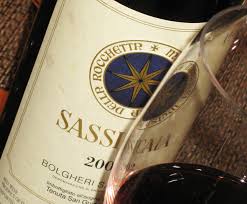
Sassicaia is approximately 15% Cabernet Franc blended with Cabernet Sauvignon to create one of the most sought after and priciest Super Tuscan wines made.
Robert Parker of Wine Advocate described Castello di Amorosa ‘s Super Tuscan blend, La Castellana as “Full-bodied, lush and seductive”. La Castellana marries Sangiovese and Merlot with Cabernet Sauvignon to create this blended masterpiece.
Blending grapes gives the advantage and potential of adding complexity to the resulting wine blend and provides a tapestry of multiple flavors and aromatics. It also offers an opportunity to achieve balance– the happy ‘marriage’ of fruit, acid, tannin, alcohol, and oak that makes great wines sing in perfect harmonic splendor and not-so-great wines seem full of wrong notes and missed opportunities.
People and grapes, we’re not so different.
Mama Mia!

Mary Davidek
Mama mia!
The great thing about a blog; I am able to write about whatever I am feeling or thinking or what may be inspiring me. Given the time of year and last week’s heat wave I considered an esoteric look at grilling and barbecue. But, in all honesty, the outdoor grill has never has been my forte. Cinco de Mayo had possibilities as cuisine from south of the border is infinitely more inspirational to me than a gas grill, a Weber or a hibachi–and practically anything made into a taco is delicious. However, as we approach Mother’s Day, I decided to take it home.
My Mom was a great cook which was no minor achievement for an Irish woman who married into an entirely Italian family. I’m not simply referring to pot roast or a weekday casserole. No, she was creative in her use of spices and seasoning. Mom was instinctively technically correct and taught me the importance of making food visually appealing before we had top celebrity chef royalty or cable networks devoted to food with culinary game shows and cooking competitions. As a child I would sit and play quietly each afternoon while my mom watched Julia Child or Graham Kerr aka The Galloping Gourmet. As they explained the dish featured on the episode she would comment “oooh, I think I will try that on Dad’s birthday” or “Julia is sure using a lot of cream today!”
My mom was also a great hostess and loved to entertain. Monthly cocktail parties were particularly exciting for me. Although I may not have sampled the libations, the yummy and abundant little treats made for the occasion were so tasty it was just cause for excitement– especially if mom’s delicious mini meatballs were on the menu! I knew while the adults milled about, that evening I would host a private party of one with my own little array of goods. With a Shirley Temple stuffed with more cherries than liquid in hand, off I would go to my bedroom for an evening of sitcoms du jour and yummy bits from the gala. Mom checked on me to replenish my sustenance but eventually I would nod off to the sound of canned laughter from the TV and the comforting banter of my parents and friends enjoying a festive evening in the background.
I guess I inherited mom’s love of entertaining and hopefully, her talent of being a great hostess as I have the distinct joy and pleasure of entertaining guests at the Castello on the ‘Royal Paring‘, a food and wine pairing experience. With one of the most beautiful settings in the world as my backdrop, and at times with a lump in my throat, I envision my mom smiling and nodding with approval at a job well done.
Happy Mother’s Day.
Salud.
Recipe: Italian Style Chicken Mini Meatballs
Pairing Wine with Vegetables | Castello di Amorosa

Mary Davidek
My Beef with Vegetables
When pairing wine and food, while vegetables are certainly a seasonal selection; wine and vegetables rarely makes a reasonable connection. When it comes to compatibility, wine and veggies make for a challenging relationship. However, with a little pairing intervention, we can salvage this savory dilemma.
First, let’s discuss the easy ones; mushrooms, potatoes and eggplant. Denser, heavier and earthier vegetables often used in heartier dishes. Think of the earthy quality of Pinot Noir to pair with these meaty veggies. A hearty mushroom like Portobello can even take on Bordeaux varietals like Merlot and Cabernet Sauvignon.
With green vegetables, play off the green flavors of these veggies by grilling and topping with a balsamic glaze. For richness add a cream sauce or cheese (there, I finally said it…you’ve been waiting for it!). These green flavors work well with Pinot Bianco or Pinot Grigio which often have notes of green fruit and provide a less aggressive palate then grassy and citrusy Sauvignon Blanc.
Asparagus and Artichokes. These delicious little buggers get their own space as they are notoriously difficult to pair with wine. This is due to cynarin. Cynarin is a phenolic acid compound found in the green leaves and seeds of artichokes and asparagus which gives a sweet flavor to these yummy vegetables. However, it can be challenging to complement these notes with wine because the sweetness is not from actual sugars and it makes most wines, even those with low levels of residual sugar, taste bitter. A sure way to contrast these flavors is with spicy aioli, a creamy dip, or a rich sauce. For wine, try an Austrian, Gruner Veltiner. Don’t underestimate this peppery white, Gruners are not to be taken lightly. This polished Austrian has attitude to spare and can finesse the most fickle flavors–even artichokes and asparagus.
If the addition of sauce, cheese, and cream is not an option as it can defeat the benevolent intentions of serving and eating vegetables, fear not, I have a sure fire way to make veggies almost wine-friendly; meat. Therein lies my beef with vegetables.
Merlot Beef with Broccoli
1 1/2 tablespoons cornstarch
1/4 teaspoon salt
1/4 teaspoon black pepper
3/4 pound sirloin beef tips, sliced against the grain 1/8 inch thick
3 tablespoons grapeseed oil
10 ounces broccoli florets
3 garlic cloves, chopped
3 tablespoons soy sauce
1/2 cup Merlot (approximately 4 ounces)
Toss together cornstarch, salt, pepper, and beef in a bowl until meat is coated. Heat 2 tablespoons oil in wok or sauté pan over medium high heat until hot but not smoking, stir-fry beef until just cooked through, approx. 1 minute. With a slotted spoon, transfer beef to another bowl and keep warm. Add remaining oil to sauté pan along with broccoli and garlic. Stir-fry until broccoli is just tender and garlic is pale golden, about 2 minutes. Add soy sauce and wine and bring to a low boil. Return meat to skillet. Stir until sauce is thickened.
I know; adding bacon is not playing fair but…absolutely delicious wine pairing with vegetables.
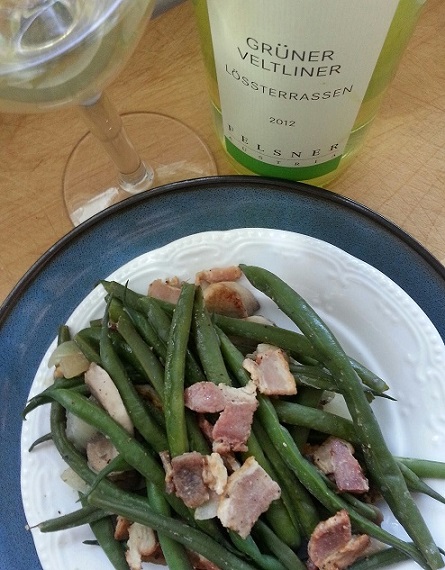
A little food and wine levity. When all else fails…..go back to the basics!
